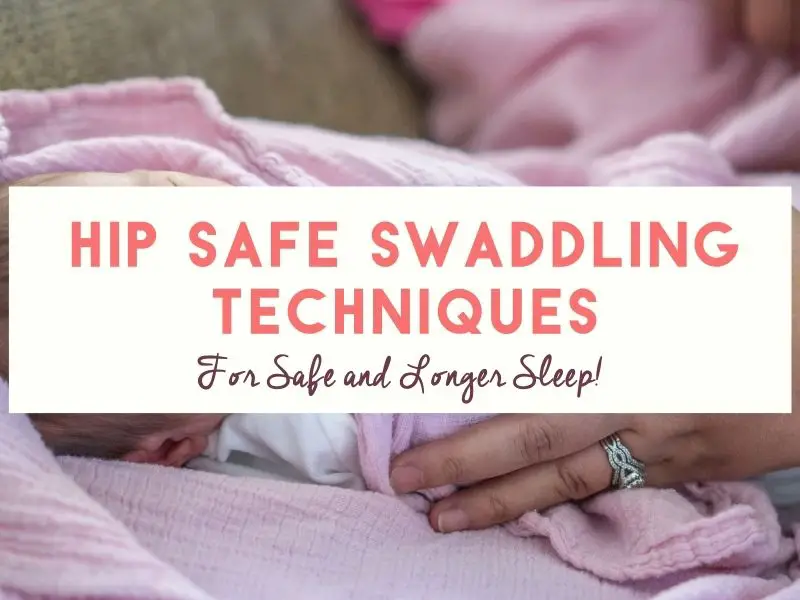The sleep-deprived parent of a newborn, there’s nothing more disheartening than watching as your baby’s arms or legs twitch out in a startle reflex, and the crying starts anew just minutes after getting them calm.
Instead of helplessly waiting for this stage to pass, lull your newborn to sleep using approved swaddling techniques to keep your baby feeling secure, reduce crying, and enjoy longer sleep.
There are two basic healthy swaddling techniques you can use, these are:
1. The Basic / Quick Swaddle
- Lay the square cloth on a flat surface and fold down the top corner about the length of your hand to form a straight edge of a triangle.
- Lay your baby on his back, so his shoulders are aligned with the straight edge of the fabric.
- Gently bring your baby’s right arm down next to his body and pull the right corner of the fabric over your baby’s arm and chest.
- Tuck it under his left side.
- Bring your baby’s left arm down and pull the left corner of the fabric over your baby’s body.
- Tuck it under his right side.
- Fold the bottom tail of the cloth and tuck it loosely under your baby, making sure that his legs are bent up and out. The weight of your baby will hold the swaddle in place.
Important Note About Swaddling and Hip Placement
One thing to keep in mind when swaddling a newborn is to use the right technique to avoid developmental dysplasia of the hip. According to the International Hip Dysplasia Institute, suddenly straightening a newborn’s legs after months in the fetal position in the womb can loosen hip joints and damage the soft cartilage of the hip socket.
To reduce the risk of this condition, which can cause hip problems and pain later in life, your baby’s legs should be able to move around, bending up and out from his body, while in the swaddle.
Here’s a quick video by the International Hip Dysplasia Institute showing a basic/quick swaddle that doesn’t restrict your baby’s legs:
You’ll note that this video also shows you a sleep sack swaddle, which is the second method we’re going to talk about right now!
Easy Swaddlers / Sleep Sacks
Another, easier way to swaddle your baby is of course a sleepsack with an attached swaddle.
These swaddlers let you zip your infant into a wearable blanket, which allows enough room for their legs to move, and have a velcro swaddle wrap that allows you to snugly secure your baby’s arms to their body.

As your baby begins to roll over, you can wrap the swaddle around her torso and leave her arms free. This free movement of course can help promote infant muscle development and coordination in your baby’s arms, and allow them to lift their head as needed.
The other benefit to the all-in-one sleep sack is the lack of an extra blanket in the crib. The National Institute of Health recommends keeping an infant’s sleep area clear, with no extra pillows, blankets, or bumpers.
If blankets must be used, they recommend having the blanket tucked under the mattress and pulled no higher than a baby’s chest.
A good sleep sack will keep itself snug to baby’s chest keeping their face totally clear, so getting your infant used to a sleep sack instead of a blanket may help you sleep easier at night too.
What Sleepsacks are Safe?
As we’ve discussed, we want any swaddle or sleepsack to be tight to the chest, and super loose on the legs. Here are some sleep sacks and swaddle straps that are both hip and sleep safe:
1. Halo, Sleep Sack Swaddle
2. Anna & Eve, The Swaddle Strap
3. Embé, Embé 2-Way Swaddle
4. Woombie, Swaddle
When to Stop Swaddling
A full-body swaddle is not recommended after your baby shows any signs of trying to roll over. Many babies start working on rolling at around two months of age.
Final Thoughts
To re-emphasize this point, babies should be placed on their backs to sleep. Sleeping on their stomach or side when swaddled increases a childn’s risk for SIDS and other sleep-related deaths.
While it’s perfectly safe to swaddle a newborn who isn’t showing signs of rolling over yet, if your child is past the newborn stage, or more active, seek the advice of their healthcare provider before swaddling.
References
American Academy of Pediatrics. (2020). Swaddling: Is it Safe? https://www.healthychildren.org/English/ages-stages/baby/diapers-clothing/Pages/Swaddling-Is-it-Safe.aspx#:~:text=When%20to%20Stop%20Swaddling,arms%20swaddled%20in%20or%20out.
International Hip Dysplasia Institute. (2020). Are you swaddling your baby properly? https://hipdysplasia.org/infant-child/hip-healthy-swaddling/
National Institite of Child Health and Development. Ways to Reduce Baby’s Risk. https://safetosleep.nichd.nih.gov/safesleepbasics/risk/reduce

